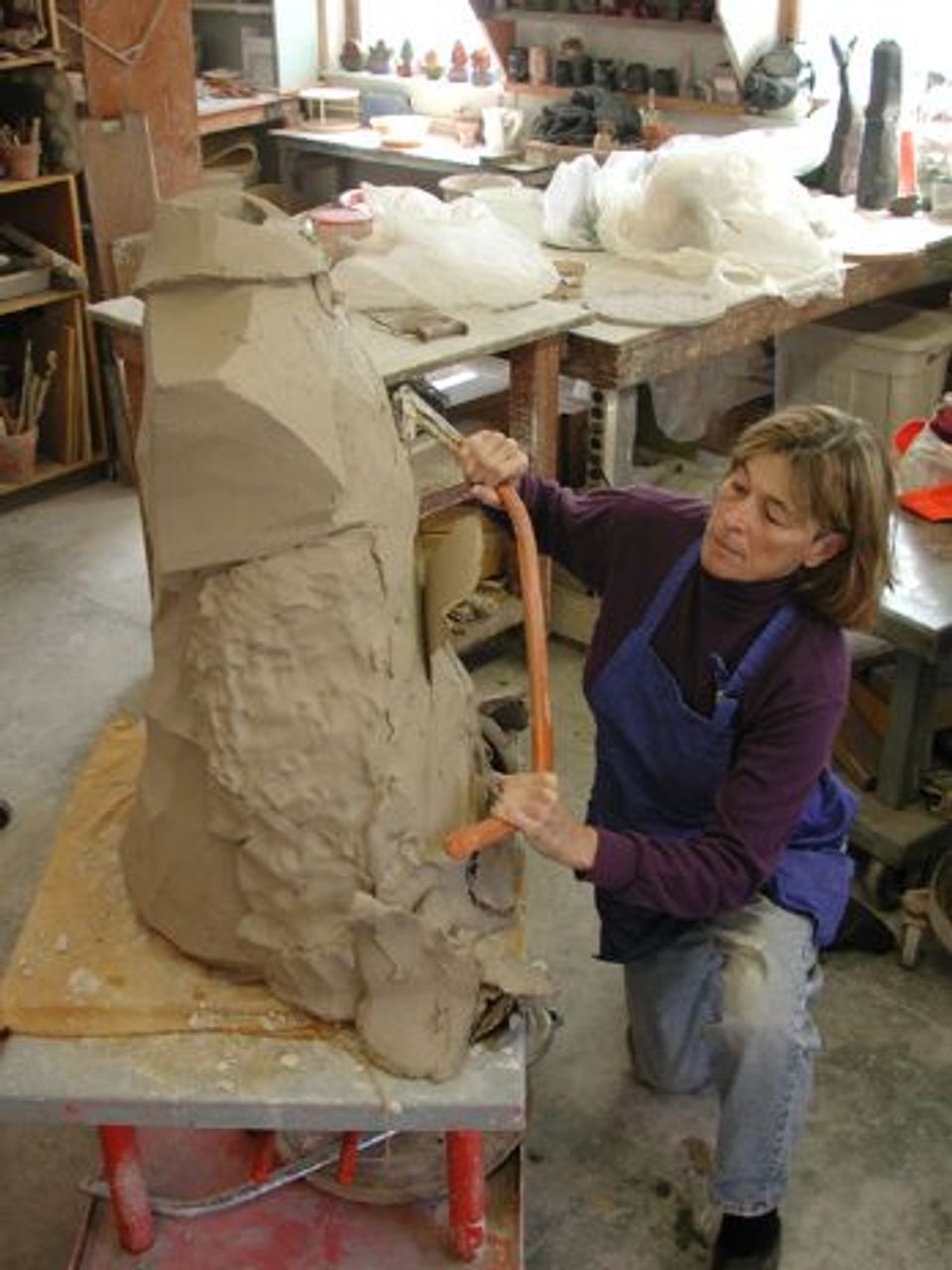Nancy Jurs

- Biography
Trained in traditional pottery at Rochester, New York's School for American Craftsmen, Nancy Jurs spent the first fifteen years of her artistic career creating functional raku works. In 1980, however, she began to expand the parameters of her ceramics, creating functional wall shelves, or "wall pouches," that suggested butterflies or female forms. These pieces were soon replaced by "blouses" that Jurs considered emblematic of women's bodies and spirit.
The relationship of the clothing-inspired pieces to Greek and Roman draped sculpture led Jurs to experiment with larger-than-life-size sculptural forms that suggest goddesses, women, and animals. The emotionally expressive clay shapes are hand-built or wheel-thrown and are glazed, painted with acrylics, or finished with any combination of techniques that appeals to the artist. "Where all my work was once a many-faceted female expression," Jurs has said, "it now appears to be much more about women in emergence—a growing out, rising above, or hatching from other forms and constraints."
National Museum of American Art (CD-ROM) (New York and Washington D.C.: MacMillan Digital in cooperation with the National Museum of American Art, 1996)













